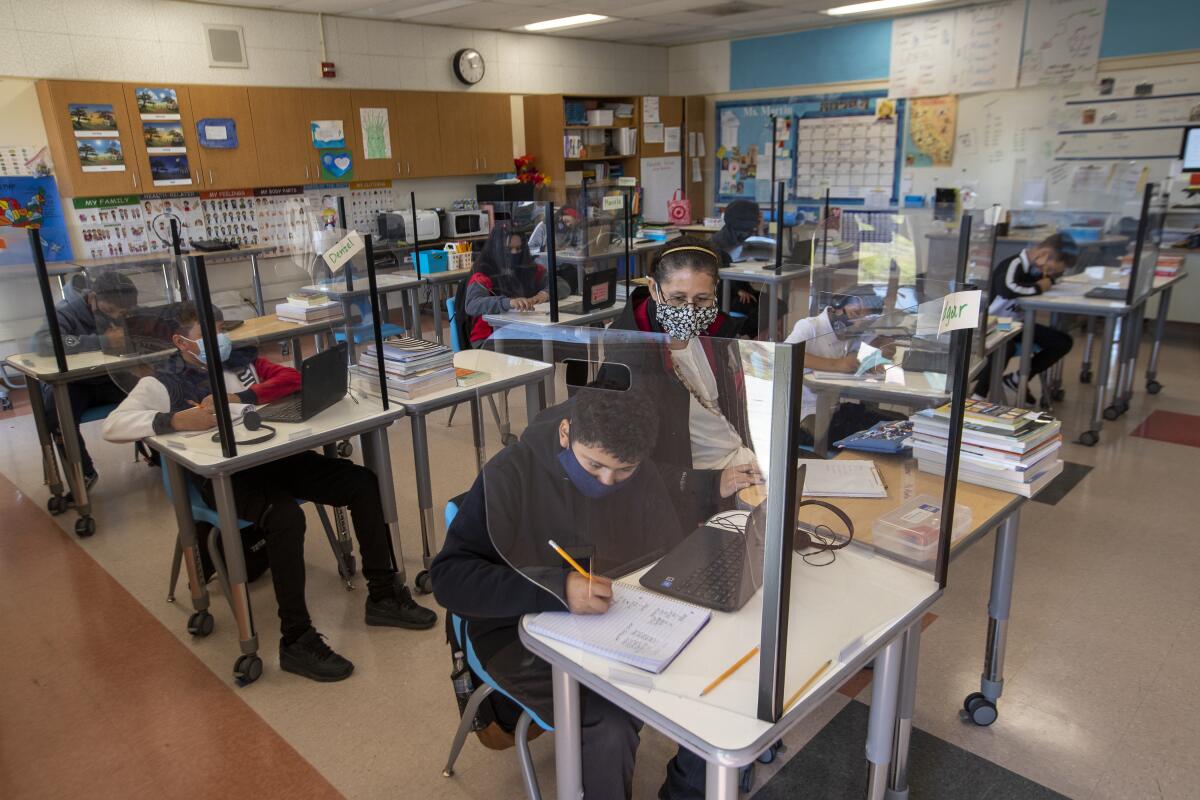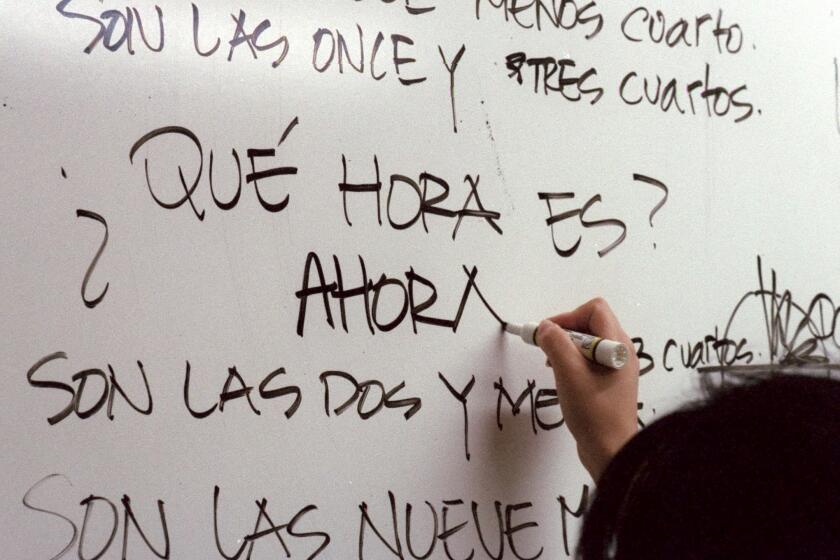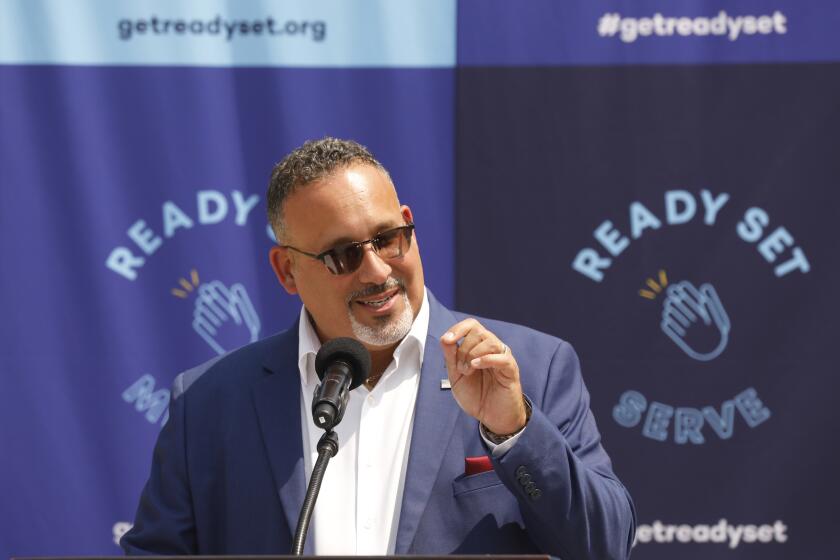A shortage of bilingual teachers threatens goal for a multilingual California

- Share via
Five years ago, the California Department of Education set a goal that half of K-12 students would be literate in at least two languages by 2030, and three-fourths by 2040, to be achieved by recruiting and training more teachers to teach bilingual classes, enrolling more students in dual immersion classes and encouraging more students to become literate in more than one language. It’s not that much of a stretch given that about 40% of the state’s students already speak another language at home.
The Global California Initiative 2030 recognizes that preparing students for a global economy is essential, but the state has lagged in its efforts to build the ranks of bilingual teachers needed to reach the goal. The number of new teachers authorized to teach bilingual classes who are hired annually has increased each year, growing from 716 in the 2012-13 school year to 1,188 in 2020-21. However, that number decreased to 1,116 the following year. The global initiative sets a goal of hiring 2,000 teachers in 2040.
Nonprofit education research organizations, such as the Learning Institute and the California Budget & Policy Center, have warned about the worsening bilingual teacher shortage in the last few years.
One reason that school districts statewide are scrambling to keep up with demand for bilingual teachers is that the COVID-19 pandemic exacerbated teacher shortages nationwide, particularly in fields such as math, science, special education and bilingual education.
Demand in the workforce for Spanish-English bilingualism is rising. Those with degrees in the language can have more career opportunities and earn higher pay.
Assembly Bill 1127 by Assemblymember Eloise Gómez Reyes (D-Colton) would go a long way to easing that shortage, by restarting and expanding the Bilingual Teacher Professional Development Program, a $5-million initiative that has added 400 bilingual teachers to districts statewide since 2017.
Grants of $625,000 were awarded to eight school districts and agencies to use through 2021 to launch what is known as “grow your own” programs to train local teachers to become certified in bilingual education and to help former bilingual education teachers renew their training and certification. One of the grant recipients was the Los Angeles County Office of Education, which, in conjunction with Loyola Marymount University’s Center for Equity of English Learners, enrolled about 150 people from 10 districts to train to become certified bilingual teachers.
It’s a sensible move, and it’s already funded. The 2023-24 spending plan signed by Gov. Gavin Newsom this month included $20 million for the program. Now the Legislature just has to pass AB 1127 to put the program in motion.
The measure is sponsored by the California Assn. for Bilingual Education, Californians Together and Supt. Tony Thurmond, whose mother was an immigrant from Panama and who wrote legislation to expand bilingual education when he was in the Legislature.
Commentary: Being multilingual is no longer a liability for students. That’s good for the U.S.
Encouraging students to become multilingual is a major goal of U.S. Secretary of Education Miguel Cardona. What a nice change from the days when kids whose first language was not English were seen as problems.
Schools nationwide are challenged by teacher shortages, particularly for specialized fields such as bilingual education. California, similar to other states, has a variety of programs to try to alleviate the dearth of bilingual education teachers, including partnerships with Mexico and Spain. “Grow your own” programs, which draw from local resources, such as teachers who are bilingual but need bilingual certification or recruiting programs at the high school levels, are consistently recognized as one of the most successful ways to grow the supply of certified bilingual teachers.
In recent years, the state has been trying to rebuild its pipeline of certified bilingual teachers destroyed when voters in 1998 approved Proposition 227, which effectively ended bilingual education in the state. Fortunately, Proposition 227 was repealed in 2016, but although that opened up a new avenue for bilingual education in the form of dual language immersion, the damage to teacher development has been done.
An increasing number of California’s high school graduates are earning the state seal of biliteracy on their diplomas — from nearly 24,000 a decade ago when the state first offered the designation to about 71,000 in 2021 — which recognizes a high level of proficiency in speaking and writing English and one or more languages upon graduation.
The state has taken important steps in coming up with a road map to ensure more students are earning this recognition. Now, they just need the vehicle to follow it.
More to Read
A cure for the common opinion
Get thought-provoking perspectives with our weekly newsletter.
You may occasionally receive promotional content from the Los Angeles Times.











